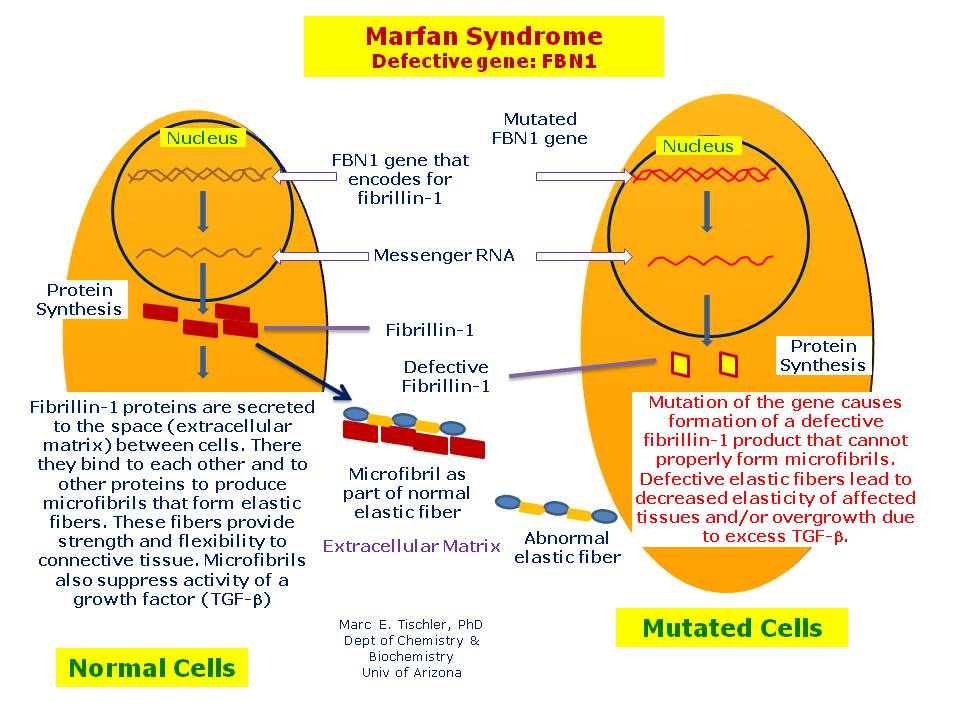Marfan Syndrome
Marfan syndrome is a genetic disorder
that affects the connective tissue in many parts of the body.
Connective tissue provides strength and
flexibility to structures such as bones, ligaments, muscles, blood vessels, and
heart valves. The signs and symptoms of Marfan syndrome vary widely in
severity, timing of onset, and rate of progression.
Mutations in the FBN1 gene cause Marfan
syndrome. The FBN1 gene provides instructions for making fibrillin-1 protein.
Fibrillin-1 binds to other fibrillin-1 proteins and other molecules to form
microfibrils. Microfibrils become part of the fibers that provide strength and
flexibility to connective tissue. Also, microfibrils store growth factor beta,
or TGF-β , and release them at various times to control the growth and repair
of tissues and organs throughout the body. A mutation in the FBN1 gene can reduce
the amount of functional fibrillin-1 and microfibrils, which leads to decreased
microfibril formation. As a result, excess growth factors TGF-β are released
and elasticity in many tissues is decreased, leading to overgrowth and
instability of tissues.
There is no cure for Marfan syndrome, treatment focuses on preventing
the various complications of the disease.



http://disorders.eyes.arizona.edu/disorders/marfan-syndrome
http://www.glogster.com/faithbreen18/marfan-syndrome/g-6lkpl0ukh0id80elm3hu1a0
http://www.glogster.com/kathrynd/marfan-syndrome/g-6lo6plekddcpqv7fksfvpa0
No comments:
Post a Comment